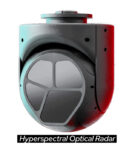General Atomics Aeronautical Systems Inc. (GA-ASI) showcased its MQ-9B SeaGuardian unmanned aerial system (UAS) during a public demonstration at the Naval Air Station (NAS) Island Open House in Japan. The event provided a rare opportunity for regional stakeholders and the public to witness the platform’s advanced intelligence, surveillance, and reconnaissance (ISR) capabilities in a maritime context.
SeaGuardian in Focus: A Maritime Evolution of the MQ-9 Reaper
The MQ-9B SeaGuardian is the maritime variant of GA-ASI’s MQ-9B SkyGuardian—a next-generation Medium Altitude Long Endurance (MALE) UAS derived from the combat-proven MQ-9A Reaper. Designed for persistent multi-domain ISR operations over land and sea, the SeaGuardian integrates a suite of sensors tailored for maritime surveillance missions.
Key features include:
- Maritime surface-search radar (Leonardo Seaspray 7500E V2 AESA radar)
- Automatic Identification System (AIS) receiver for ship tracking
- Electro-optical/infrared (EO/IR) sensor turret
- Signals intelligence (SIGINT) payload options
- Beyond Line-of-Sight (BLOS) satellite communications
The aircraft is certified to operate in non-segregated civilian airspace under NATO STANAG 4671 compliance and boasts endurance exceeding 40 hours depending on mission profile. The platform’s modular design allows rapid reconfiguration for various mission sets including anti-submarine warfare (ASW), border patrol, disaster response, and search-and-rescue.
Demonstration Highlights from NAS Island Open House
The NAS Island Open House—held annually by Japan Maritime Self Defense Force (JMSDF)—served as an ideal venue to display allied high-tech platforms amid growing regional tensions in the Indo-Pacific. During this year’s event held in September 2025, GA-ASI presented the SeaGuardian alongside Japanese defense officials and U.S. Navy representatives.
The demonstration included static displays as well as simulated ISR missions over coastal waters. According to GA-ASI statements and local observers:
- The aircraft conducted simulated maritime patrols using its AESA radar to track surface vessels.
- Live feeds from EO/IR sensors were streamed to ground stations demonstrating real-time situational awareness.
- AIS integration enabled automated vessel identification layered with radar cues.
This public showcase was not only aimed at increasing awareness but also aligned with ongoing Japanese interest in acquiring long-endurance UAVs for maritime domain awareness under its expanding defense modernization plans.
Regional Strategic Context: Indo-Pacific Surveillance Demands
The deployment and showcasing of the MQ-9B SeaGuardian in Japan reflects broader strategic imperatives across the Indo-Pacific region. With increasing gray-zone activities by China near disputed territories such as the Senkaku Islands and growing submarine activity across key sea lanes like the East China Sea and South China Sea, persistent maritime ISR has become a critical capability requirement for regional allies.
Japan has been actively exploring unmanned systems to augment its limited manned patrol aircraft fleet. In fact:
- A Japanese Coast Guard trial of MQ-9A began in October 2022 off Hachinohe Air Base under a lease agreement with GA-ASI via Mitsubishi Electric-led consortium.
- The JMSDF has expressed interest in future acquisition of MALE UAVs capable of integrating into their C4ISR architecture alongside P-1 patrol aircraft and Aegis destroyers.
The United States Indo-Pacific Command (INDOPACOM) has also emphasized distributed ISR networks using unmanned assets like MQ-9 variants to enable persistent coverage without overextending manned platforms or risking escalation through kinetic presence alone.
Maturation Through Global Deployments and Interoperability Trials
The MQ-9B family—including both SkyGuardian and SeaGuardian variants—has undergone extensive international demonstrations aimed at interoperability validation with NATO allies and Indo-Pacific partners:
- NATO Exercise Joint Warrior: In April 2021 off Scotland’s coastlines, UK-based SkyGuardians participated alongside Royal Navy units validating Link 16 integration and multi-domain command-and-control handoffs.
- India Trials: In early trials conducted by India’s Navy using leased MQ-9As since late 2020, operators validated long-range maritime surveillance over Indian Ocean chokepoints such as Malacca Strait—leading India to pursue procurement discussions for up to three dozen units jointly across services.
- AUSMIN Announcements: Australia confirmed interest in integrating MALE UAVs into its Joint Force posture during AUSMIN dialogues; GA-ASI continues engagement through Project AIR7003 despite delays favoring Boeing Loyal Wingman program prioritization.
This global maturation effort positions the MQ-9B not merely as an American asset but as an interoperable node within allied C4ISR frameworks—capable of sharing data via STANAG-compliant links such as Link16 or SATCOM relays into common operating pictures used by NATO or QUAD nations alike.
Future Upgrades and Modular Payload Roadmap
GA-ASI continues to evolve the SeaGuardian platform through incremental upgrades driven by user feedback and emerging threats:
- Synthetic Aperture Radar/Ground Moving Target Indicator (SAR/GMTI): Enhancing land/coastal target tracking precision under all-weather conditions.
- SIGINT/ELINT Pods: Passive detection of adversary communications or radar emissions supporting electronic order-of-battle generation without active emissions from own platform.
- Sonar Buoy Dispensing Capability: Under development for ASW roles; would allow UAS to cue manned ASW assets or relay contact data via secure datalinks after passive detection events using MAD or acoustic sensors onboard other platforms.
An open architecture approach ensures that emerging payloads—including AI-enabled onboard processing modules—can be integrated without major airframe redesigns. This flexibility appeals particularly to nations seeking sovereign customization while leveraging proven U.S.-origin platforms under Foreign Military Sales frameworks or direct commercial sales channels depending on export control constraints such as ITAR compliance tiers.
Conclusion: A Platform Aligned With Evolving Maritime Security Needs
The appearance of GA-ASI’s MQ‑9B SeaGuardian at Japan’s NAS Island Open House underscores growing demand for persistent unmanned surveillance solutions across contested littoral zones worldwide. As both peer competition intensifies and budgets tighten globally, multirole UAS like SeaGuardian offer scalable options that blend endurance with modularity—enabling both deterrence postures during peacetime operations and critical targeting support should conflict erupt across blue-water or archipelagic theaters alike.
If adopted more broadly by partners such as Japan or India—and integrated effectively within joint C4ISR architectures—the SeaGuardian could become a cornerstone asset supporting distributed maritime operations well into the next decade.









